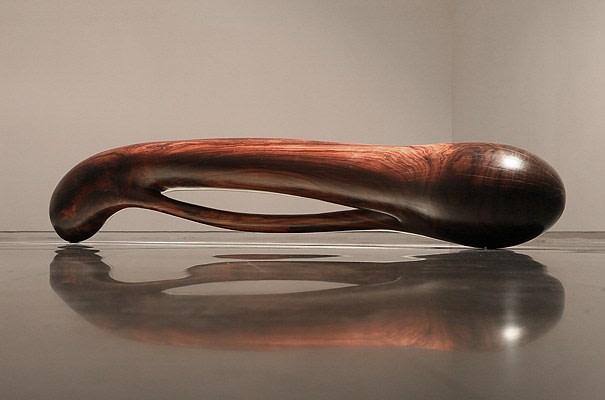
In an art scene dominated by blockbuster productions and larger-than-life installations, Ranjani Shettar is perhaps one of the few sculptors who insist on carving and creating her work by hand without the help of assistants. From not know Ing how to even hammer a nail, to creating sublime pieces of sculpture, this 36-year-old Bangalore artist has come a long way. She has under her belt a permanent display at The Museum of Modern Art in New York, the Kiran Nadar Museum of Art in Delhi, and the San Francisco Museum of Modern Art. What's unique about her sculptures are their rouge exterior and her ability to seamlessly transform the material she employs; be it teak, rosewood, or oak. A thread and wax sculpture may appear solid and heavy, while a wooden one appears buoyant and light. Time Out caught up with the globetrotting artist who was In the capital for her solo exhibition Between the Sky and Earth at Talwar Art Gallery.
How did you become a sculptor?
I am from a techie family and I was initially interested in pure science, but my love for drawing and sculpting superseded that. My father, in fact, wanted me to become an artist. At art school Karnataka Chitrakala Parishath, Bangalore I didn't choose sculpture, it was just handy and soon it became clear that I have a way with materials.
Were you too subjected to the usual gender stereotype: sculpture is for men?
(Laughs] Well, yes, when I applied I was being cajoled to take up painting: it was certainly more popular than sculpture, and I did study in a class full of boys, but I think my inner drive overcame all this. It was an attraction to the materials, of wanting to create things with my hands that were three-dimensional because that is how I think. There are women sculptors like Piloo Pochkanwala whose work I really enjoy.
Tell us about this solo. Why wooden sculptures?
I suppose my attraction to wood goes back all the way to my childhood. I had a book of fairytales that had simple illustrations where the grains of the woodcut were very apparent. I was drawn to that texture as a child and, subliminally, I found that I was attracted to wood- its grain, its individual quality. I have worked with teak, rose and walnut wood ... they all have individual qualities. I liked teakwood because it has an aura of age to it. I have worked with reclaimed wood from beams of old houses. For sculptures that are very intricate, I like to work with walnut wood because it is pliable; easy to bend. I love rosewood because of the color and the scent. Yes, making and viewing the sculptures ls a kind of immersive experience that involves all the senses.
Many artists use large teams of technicians and junior artists. What do you feel about the idea of not being physically Involved In creating your own work?
I feel restless if I am not working on my sculptures, or if I am not in my studio taking out a piece of wood, making it stand in a corner, feeling its energy ... I love carving and, in some instances, the contact with the material is so important that I cannot translate it to an assistant. Sometimes even half a millimeter makes a serious difference In the sculpture and its ability to be suspended from the ceiling, strapped onto a wall, or bent out of its natural shape. I prefer to work on my own, though I do have workmen who help me transport heavy wood pieces or cut down the initial log that I will be working on. That is probably why it has taken me two years to have this solo.
Do you think your art has global appeal, even though your studio is on the outskirts of Bangalore?
I was always brought up with knowledge of other cultures; of the universality of expression. Though I never intentionally reference my roots, there are several local factors that come into the making of my work, like the skills of weaving and wood carving which are endemic to my roots.
What do you have planned for the future?
I am very partial to wood, though I have worked In wax and thread as well as metals and other materials. I can never tell what is coming next; it usually carries on from my last body of work, and discovery feels good.
-Georgina Maddox